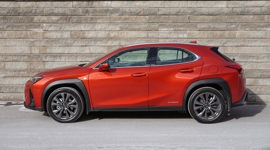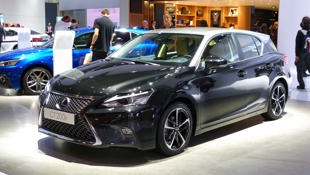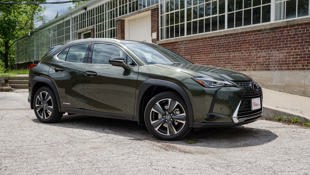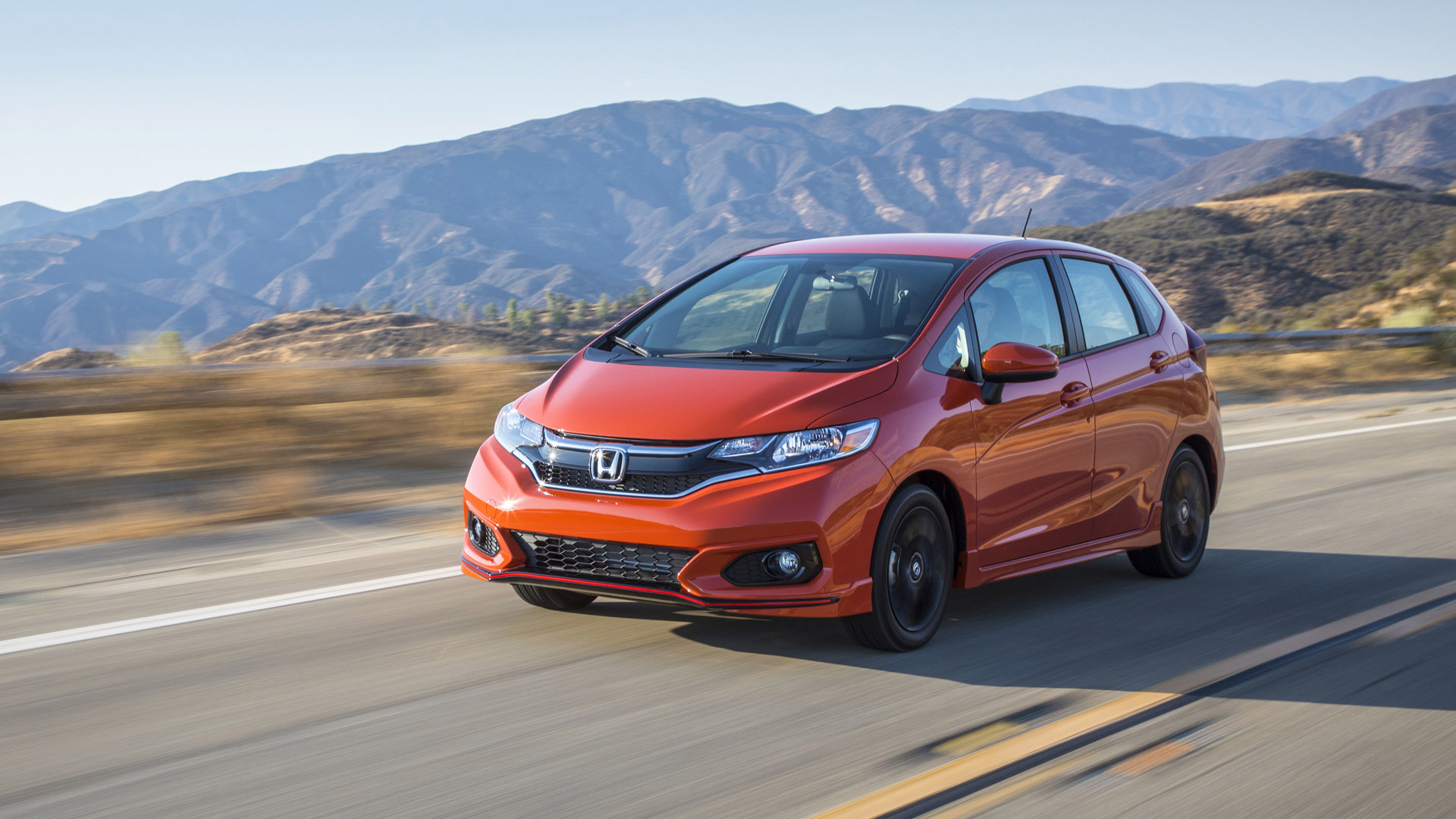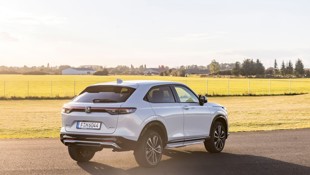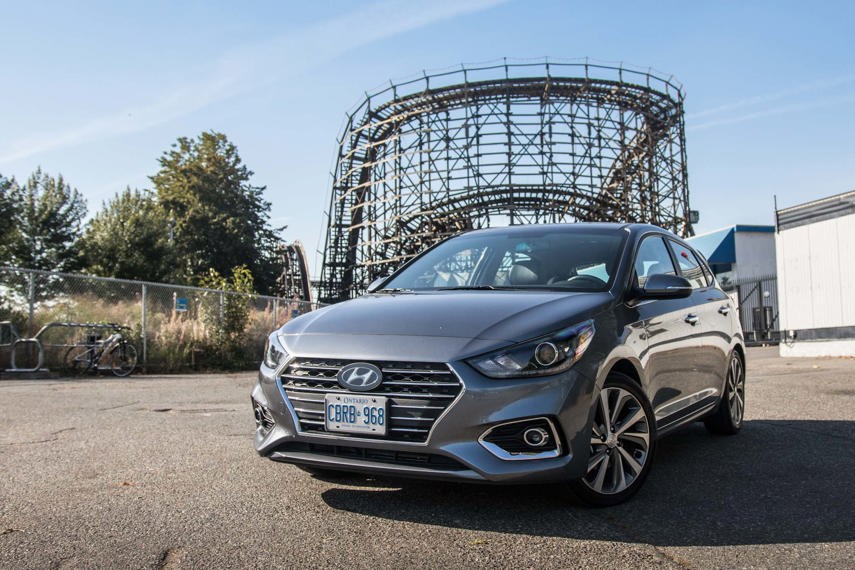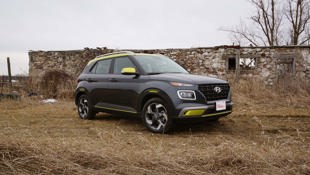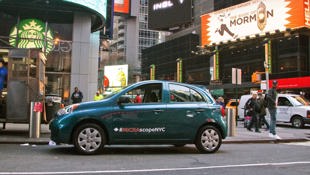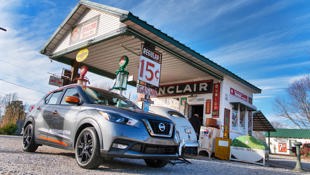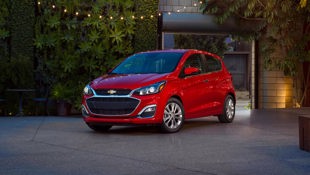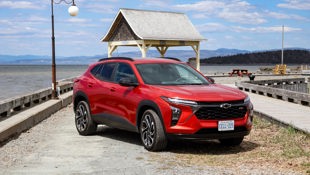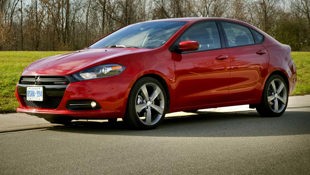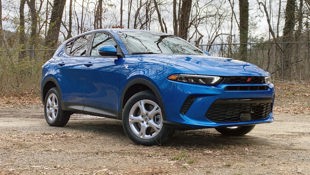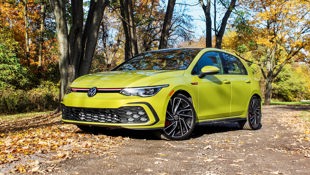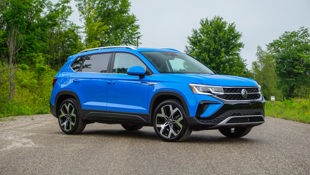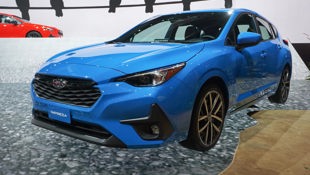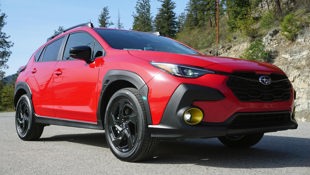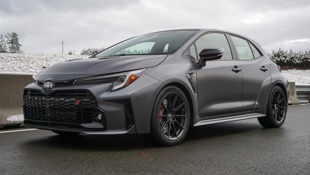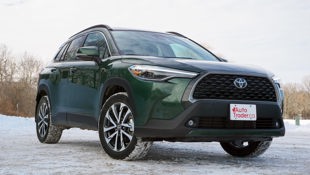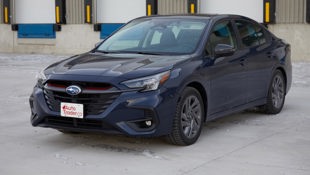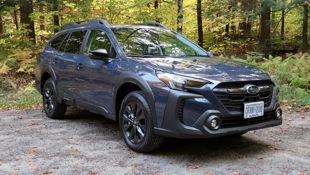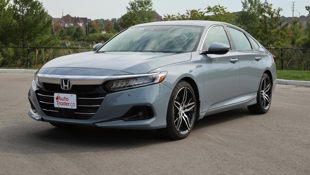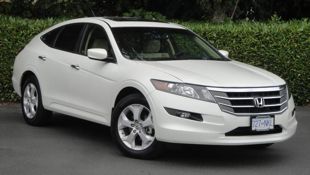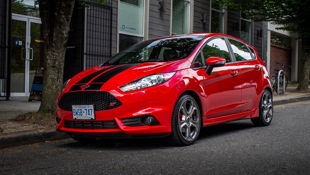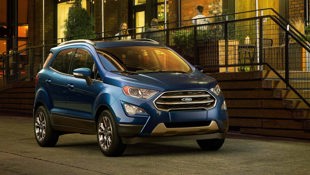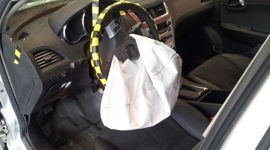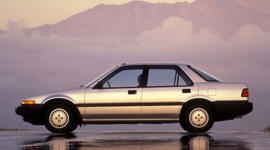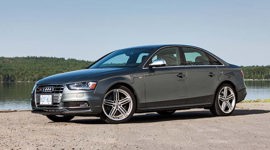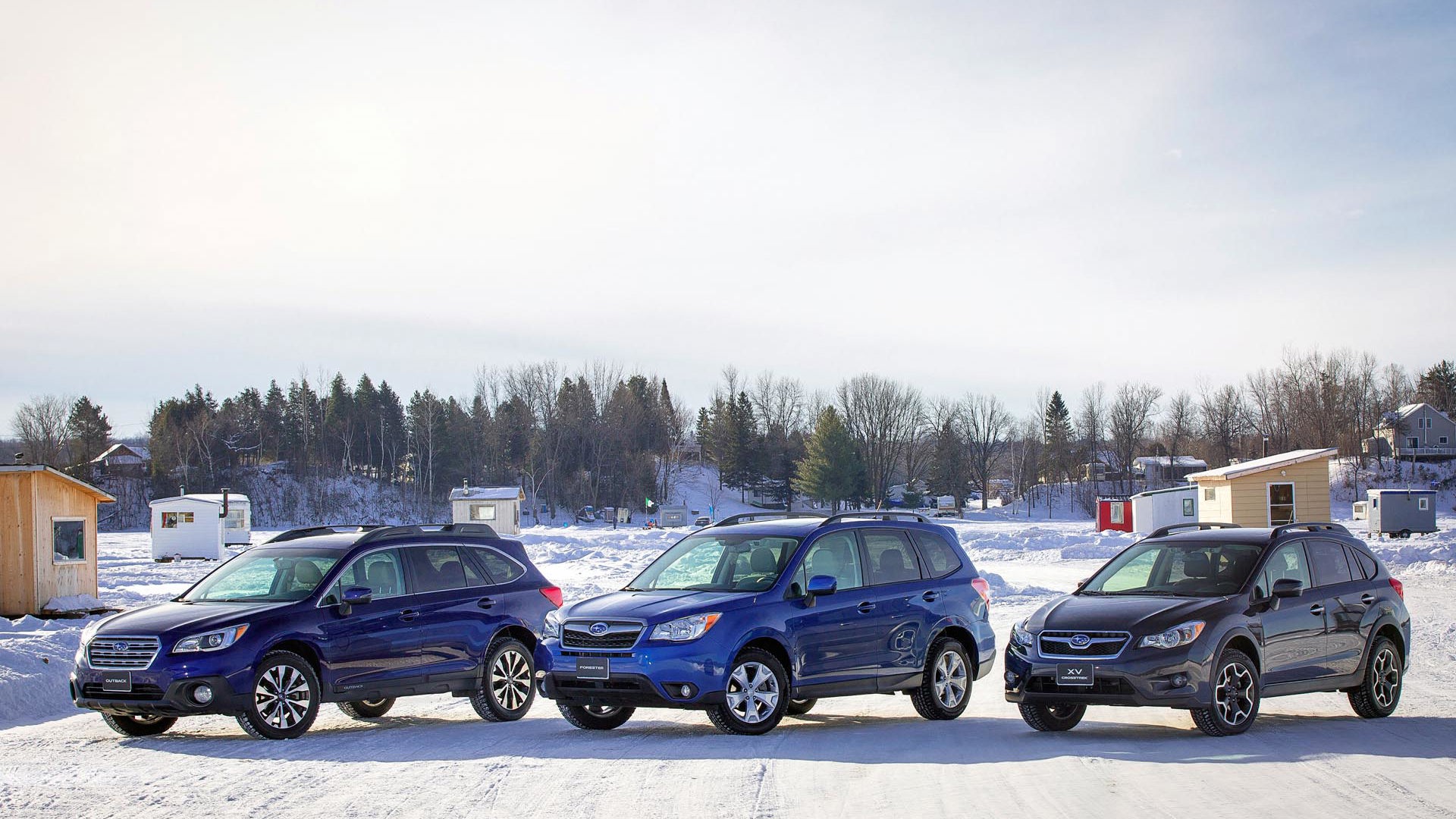Anyone with access to a DeLorean time machine can rewind a couple of decades to witness the birth of a new word in the lexicon of cars: crossover. Following in the tire tracks of burlier vehicles like the original Ford Explorer, which drew Canadian buyers out of family sedans and into four-wheel-drive rigs, the term “crossover” came to reference vehicles that retained a dose of car-like civility and construction, but offered a taller ride height and the prospect of optional all-wheel drive.
It didn’t take long for manufacturers to realize they could make a healthy dose of profit from these machines, leading some of to ditch their price-leading small cars (or drop cars altogether) in favour of vehicles that could easily be sold for a few extra bucks thanks to a slightly more rugged image – though whether buyers actually needed that capability is a debate that will continue until our Sun goes supernova.
We’ve assembled a gallery of these vehicles – some which rudely shoved aside showroom siblings, a few that cohabitate harmoniously (for now) with their car counterparts, and one that managed to pointlessly shiv its brethren only to end up a marketplace failure of epic proportions.
Shoved Aside: These Small Cars Were Replaced by Crossovers
The Lexus CT is now the Lexus UX
We’ll start with the impetus for this list. Lexus introduced the CT (which stood for Creative Touring) as a premium small hatchback packing a hybrid drivetrain and fuel-sipping behaviour blended with Lexus luxury. After watching competitors make hay (and profits) in the subcompact crossover segment, Lexus replaced it with the UX crossover – clocking in at a higher price and selling at twice the pace in this country.
The Honda Fit is now the Honda HR-V
Alas, poor Fit; we knew it well. With apologies to Shakespeare, the Fit was a wonder of modern packaging efficiency and fuel economy, able to hold vast amounts of cargo thanks to an ingeniously designed rear seat but asking little in return by way of running costs. Of course, many shoppers simply saw a little car and turned up their nose, making a beeline for other brands where they could get their crossover fix. While the Fit and HR-V lived side-by-each for a spell, only the HR-V crossover is available today.
The Hyundai Accent is now the Hyundai Venue
Remember when your local Hyundai dealer sold tiny sedans and hatchbacks at affordable prices? It didn’t take long for the Korean automaker to suss out North America’s obsessions with crossovers – a large percentage of its lineup can now be classified as such – meaning the writing was on the wall for its little Accent once the subcompact Venue got a toehold in showrooms, even though it doesn’t come with AWD. Along with ultra-low monthly payments and new car warranties at used car prices, jokes of being able to pop to your Hyundai dealer and “buy a Canadian Accent” have gone right out the window.
The Nissan Micra is now the Nissan Kicks
For ages, Nissan touted its little Micra one of the most affordable new cars in this country, clocking in at a hair under $10,000 plus fees and destination. Sure, that sum netted a sparsely equipped vehicle, but for many, the diminutive Micra represented a ticket to worry-free new car motoring. As with others on this list, the company eventually figured out it would be better off hucking keys to a slightly taller version of a similar vehicle. The least expensive Kicks these days, however, starts at $21,198 plus fees and destination, and none are available with AWD.
The Chevrolet Spark is now the Chevrolet Trax
This story from Chevrolet is markedly like the one from Nissan. The little Spark competed heavily with the Micra for title of Canada’s least expensive new car, showing up in the form of a small hatchback devoid of air conditioning but packing a new car warranty at a very affordable price. In today’s market, the new-for-2024 Trax that replaced the Spark sets an opening bid of $24,498 whilst offering a three-cylinder engine, an automatic transmission, and no AWD.
The Dodge Dart is now the Dodge Hornet
You know that so-called “gap year” taken by folks with a grain of sense to infuse their lives with a bit of real-world experience before once again diving headlong into adult work or more academia? That’s what happened with the Dart and Hornet. Some will say the Dart vanished because of a botched initial launch, or because it simply wasn’t a well-built small car. Others will argue it died to make room for the Hornet compact crossover. There are kernels of truth in both.
The Volkswagen Golf is now the Volkswagen Taos
“But wait,” you cry, hurling stale Twinkies in this author’s general direction. “Volkswagen still builds the Golf!” Technically, yes – albeit currently offered only in zoomy GTI and R trims though Canadian dealers. The days of relatively inexpensive German hatchback cars in the Great White North are gone, at least for now. In their place is – you guessed it – a cadre of crossovers and SUVs whose smallest model is the Taos.
Brothers in Arms: These Crossovers Share Platforms With Small Cars
The Subaru Impreza shares a platform with the Subaru Crosstrek
It is impossible to talk about the transition from wagons to crossovers without mentioning Subaru. Arguably one of the first brands to actively promote all-wheel drive in vehicles not shaped like traditional SUVs, its existing lineup includes the jacked-up Crosstrek, which is based on the very similar Impreza hatchback, a vehicle that is comparatively lower to the ground and without equivalent amounts of rough-road styling.
The Toyota Corolla shares a platform with the Toyota Corolla Cross
If seeking success in the car industry, one could do worse than naming a new model after an incredibly popular and long-running mate in the showroom. The new Corolla Cross has a traditional crossover shape, is available with all-wheel drive, has good cargo space, and rides higher than the sedan with which it shares part of its name. Needless to say, Toyota is selling every single one it can build.
The Subaru Legacy shares a platform with the Subaru Outback
Roughly 30 years ago, Subaru created the Outback by giving its Legacy wagon more ground clearance and tacking on some more rugged styling cues. With tough guy Paul Hogan as a pitchman, the Outback quickly became one of the brand’s best-selling nameplates. These days, Subaru has gone ahead and blessed the Outback with even more ground clearance and off-road gear to create the Outback Wilderness. Yes, this means they effectively Outback’d the Outback.
The Honda Accord shared a platform with the Honda Crosstour
For a spell, sales staff toiling at Honda dealers had a brace of Accords to sell customers. Marketed as a variant of the familiar Accord sedan with which it shared a platform and powertrain, the Accord Crosstour slotted between the CR-V and Pilot, with most considering it a spiritual successor to the old-school Accord wagon that departed in 1997. Over time, Honda dropped the Accord prefix from this crossover’s official nomenclature before cancelling the car altogether after the 2015 model year.
Flailed and Failed: This Conversion Was a Flop
The Ford Fiesta turned into the Ford EcoSport
We’ve saved the best-of-the-worst for last. Ford’s little Fiesta, available in trims ranging from bog-standard S to hot-rod ST, was unceremoniously dumped by Ford management in favour of a tiny crossover called the EcoSport – a vehicle that exhibited few “eco” or “sport” traits at all. EcoSport was poorly assembled, underpowered, overpriced, and miserable to drive. But at least it made inefficient use of interior space, making it the antithesis to everything that made the Fiesta a winner. No wonder Ford pulled the EcoSport’s plug last year.
